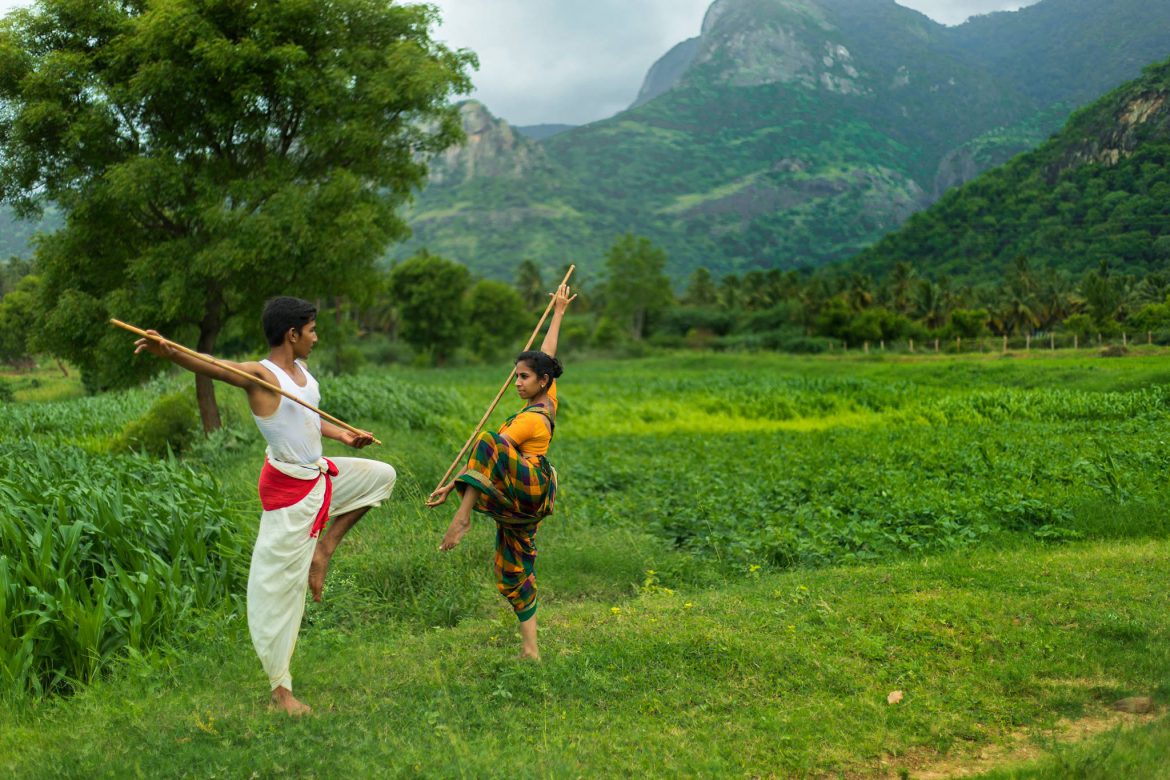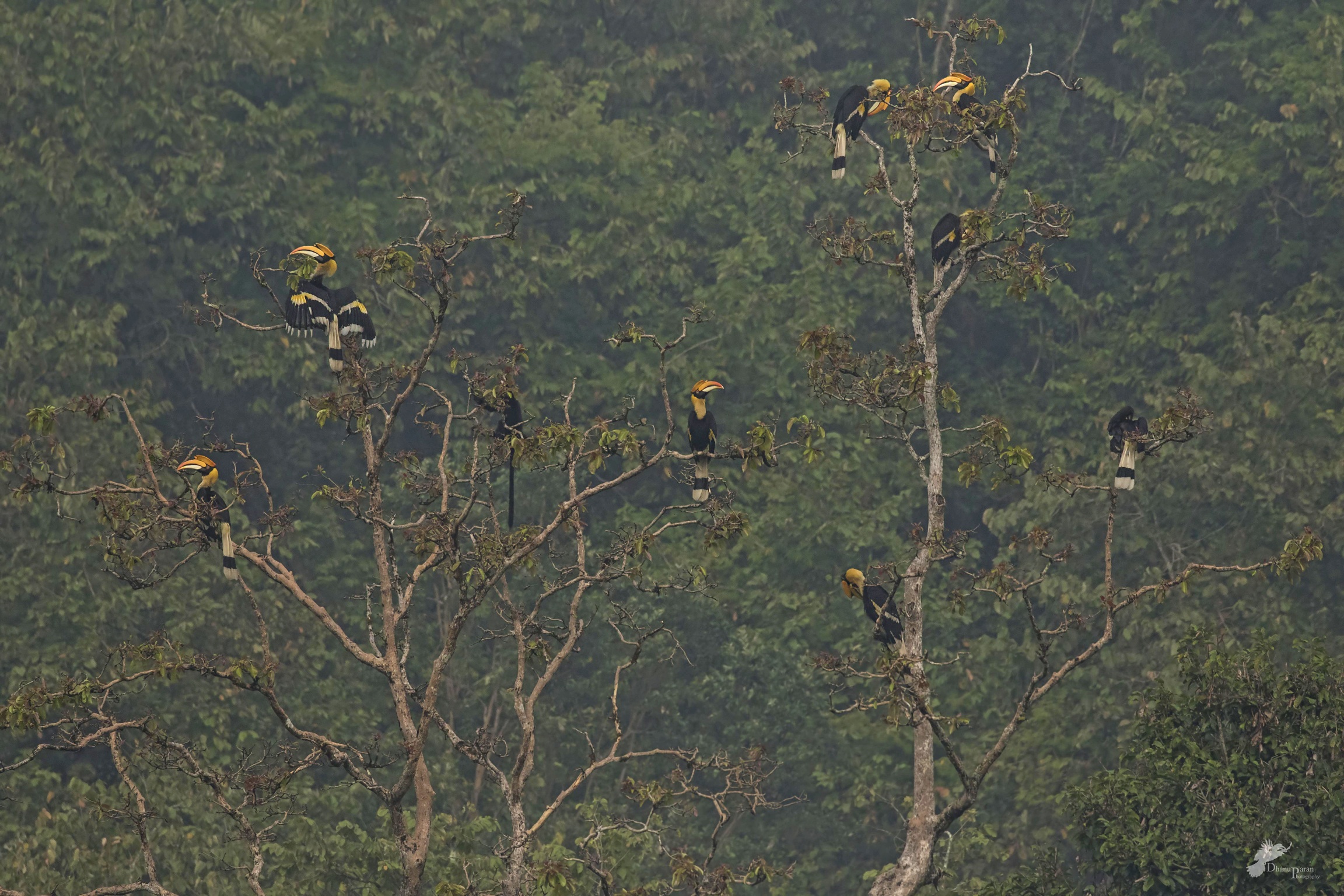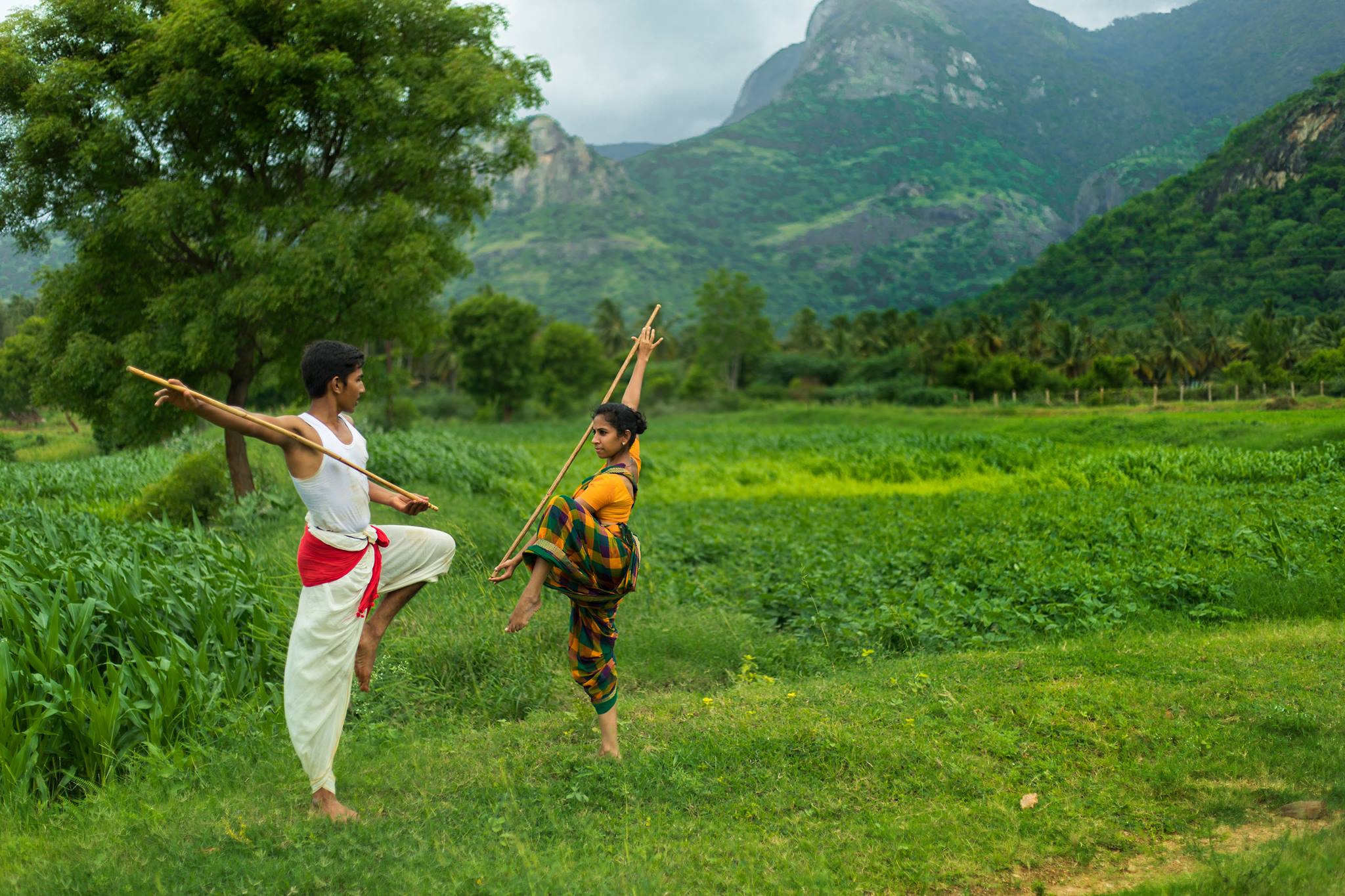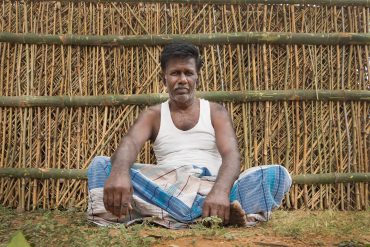Those who have heard of Silambam, an ancient form of warfare, will probably equate it to a muscular lot of artists practicing precise movements using sticks resembling bamboo poles. A recent demonstration by a Silambam master and his pupils, who practice the age-old art form in a distinctive style pertaining to the Pollachi region, revealed that it is so much more than that.
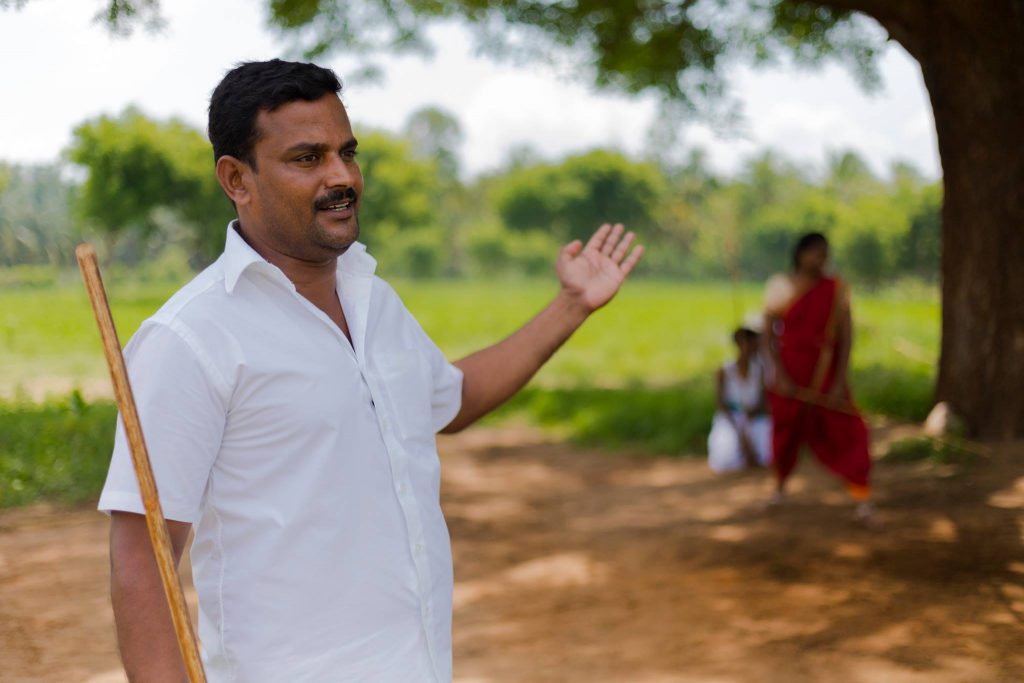
Ramesh Kumar, a native of Pollachi, teaches Silambam to students who live in and around the area. Private classes are also offered to those interested in learning this art form. His passion to encourage youngsters in the process of creating a fit body and mind through traditional art forms is what fuels his energy levels on an everyday basis. Having been taught Silambam by veteran gurus in this field, the need to share the knowledge thus procured has been the catalyst for him traversing through the countryside familiarising young girls and boys in this craft.
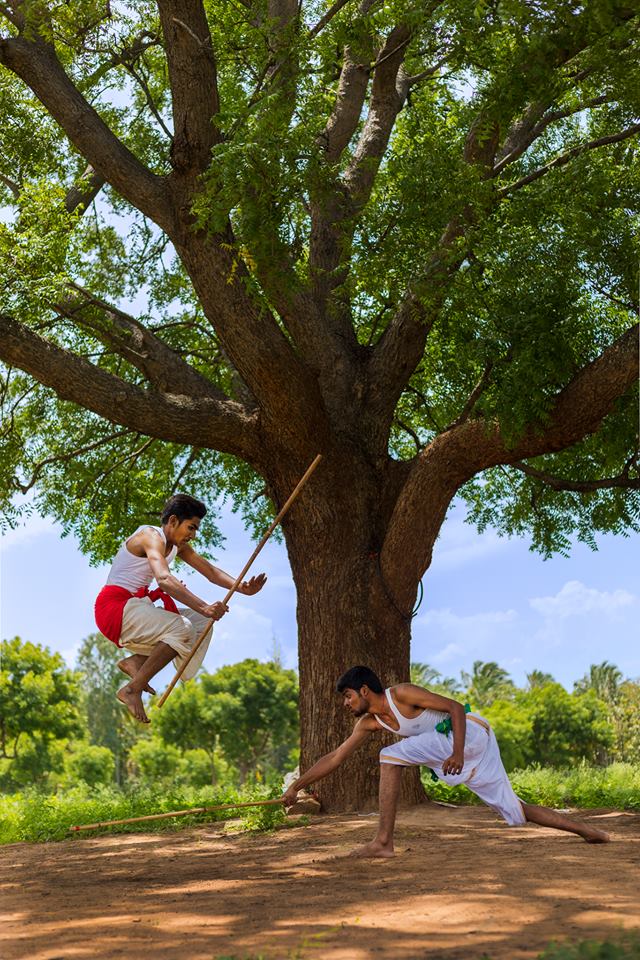
The demonstration began with basic movements with each sequence being referred to as a paadam (lesson). It usually starts with footwork, squats, and turns which in turn offer salaams (salutations) not just to the audience or teacher but also to the earth which has always borne the physical and emotional demands of the Silambam warriors. While the salutations may be of different kinds depending on the area wherein they are performed, the one thing that ties them all together is the thumping of the palm to the ground before reverentially raising the hand to the forehead in a tradition of extreme respect.
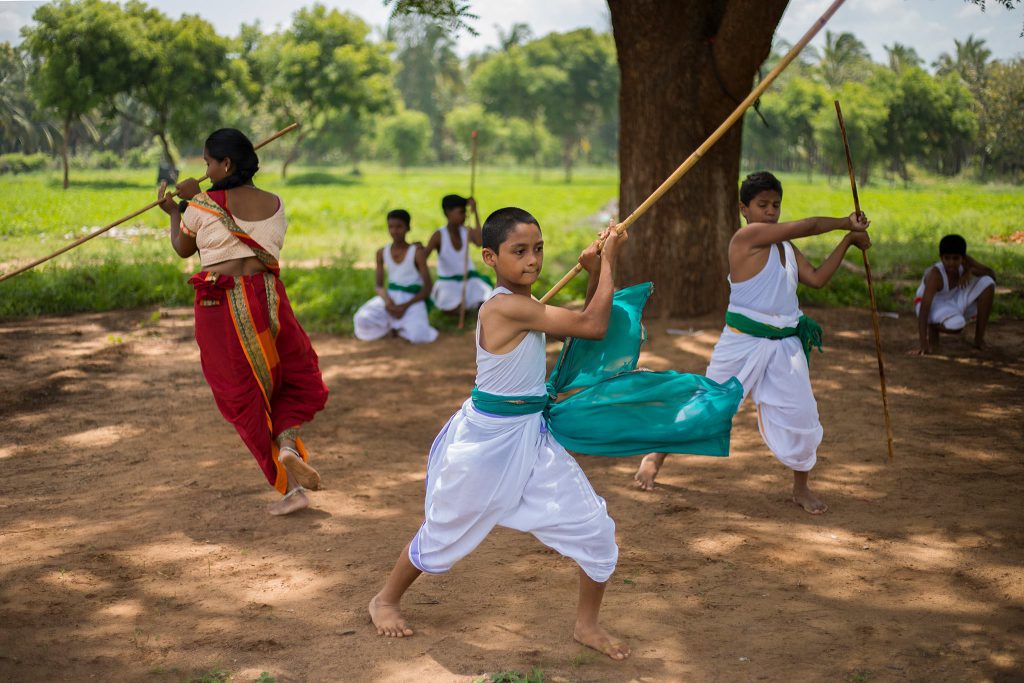
Mastery of footwork is a must before coordinating the hand movements. Only when that comes into synchronization are students even offered the kambu (stick). Although bearing resemblance to a moongil (bamboo) it is actually fashioned from a sort of hard reed. The curing is done by a water immersion and later pounded several times for the edges to seal. The insides are made up of a semi-porous cork-like material. While this kambu is lightweight and extremely flexible it is astonishing at how quickly it can turn into a stiff lethal weapon simply by the speed at which it is wielded. The teacher is very clear about the thought process behind this martial warfare. It is to be primarily used for self-defense with the added advantage of core body fitness. The traditional garb that is sported by the male and female participants comprise of clothing that are versions of sarees and dhotis, free-flowing around the limbs and tightly secured at the waist.
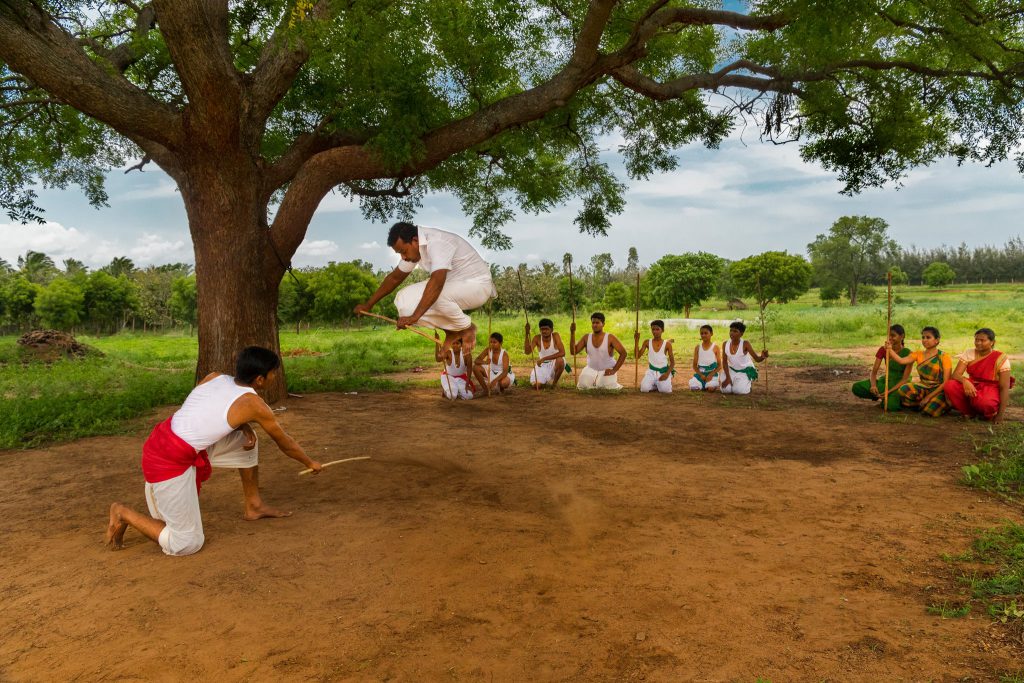
This allows the enthusiast to master the jumps, backbends, moving on haunches, manipulating the body into somersaults, handstands and full over body rolls without hurting the head or face in the process. The movements, while bold and vigorous, are at the same time graceful and are a celebration of the human body and all its strengths. Wrists and elbows are what takes time to strengthen to the quick flicks and fast twirls of the stick that is cut to the individual height of each student. The mun kaal nilavai, padai veechu, pin kaal nilavai, sarukkal etc., that were exhibited resembled the movements of world-famous acrobats parading under the big top. Their elegance of form was further accentuated by surrounding fields of verdant peanut crop, caressed by the moisture-laden breeze carrying the promise of impending showers. Sounds of civilization in the background were drowned by the swooshing of the pole as it cut through the air at a ferocious pace, slicing under the leaping feet of the opponent.
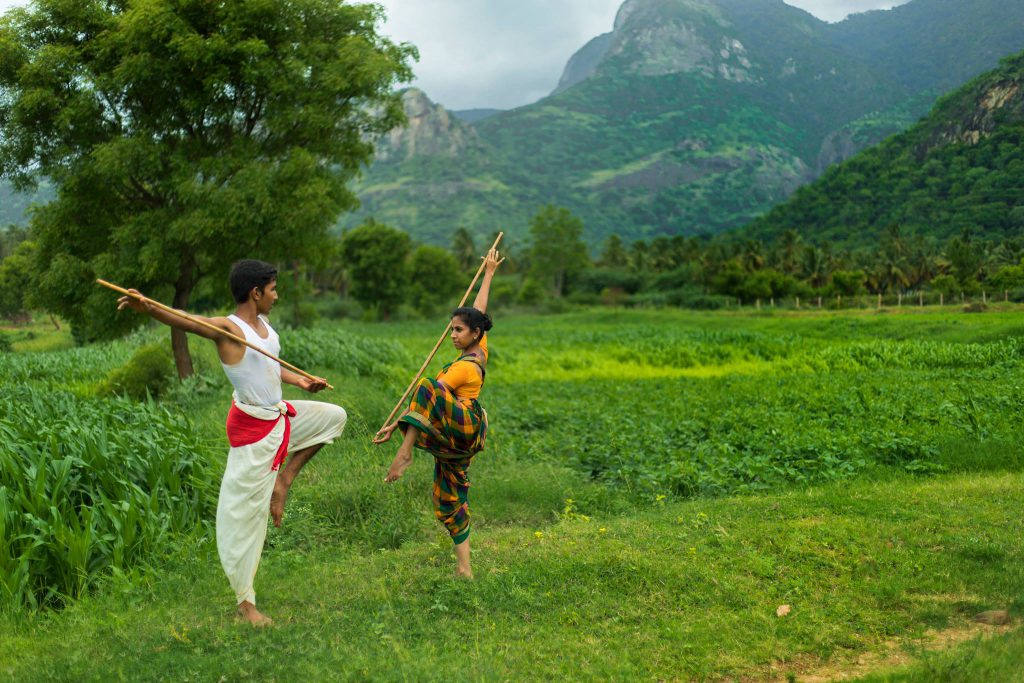
Without exaggeration, the scenic beauty of the fertile land at Sethumadai did indeed succeed in transporting the Silambam sequences to warrior-like movements that belonged in the battlefields of past rulers. Interestingly, the availability of these Silambam classes have prodded many a parent in encouraging their girl child to learn this form. When they perform and the routines gain momentum, their well-oiled braids get tossed around wonderfully agile neck muscles. It is easy to witness not just the physical strength but also confidence in their gaze and pride in their shoulders matching an attitude which is not to be messed with or disrespected. The role of music in Silambam differs slightly to other traditional art forms in that, the beat is set to the rhythm of the feet and not vice versa.
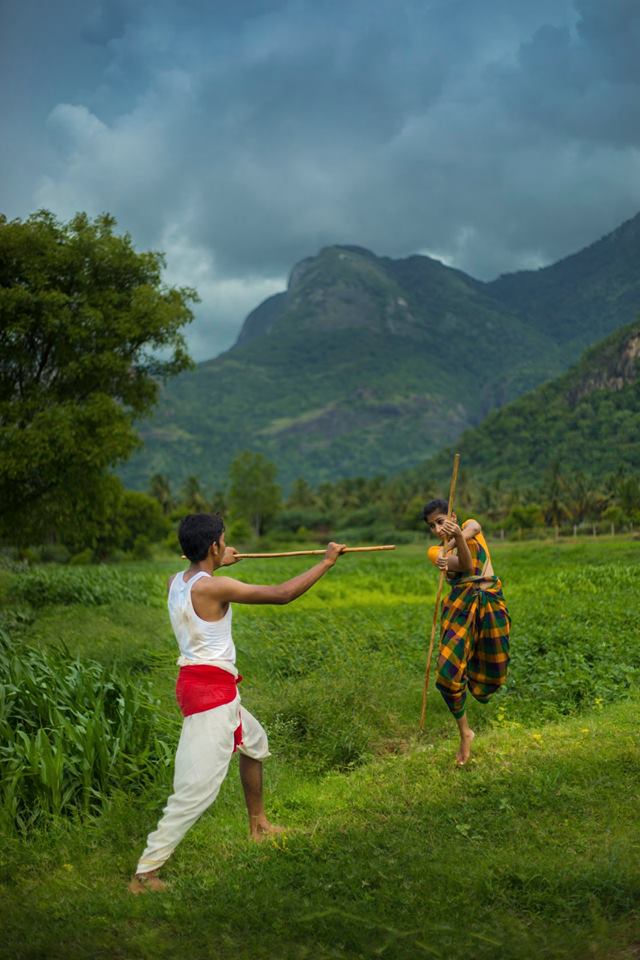
The drummer must play his tunes to compliment the motions of the Silambam dancers and pick up the tempo as required. When the stances are perfected they are taught advanced routines like gundaan padam (ropes with weights), surrul vaal (stiff chains) and also with flaming sticks. At the end of this scintillating Silambam mastery, what was actually awe-inspiring was that despite the shortness of breath, mud-soiled back, garments and weary limbs that were put through hours of strenuous cardio, the mood was to exhibit some more. The smiles didn’t waver, stomachs never growled in hunger for the afternoon meal and the enthusiasm displayed at the start of the day never waned. If children can be made to derive such immense satisfaction without grudging the hard work then such grueling workouts, which stimulate the kinaesthetic intelligence, is much needed in their curriculum for the enrichment of life and an added sense of purpose.

